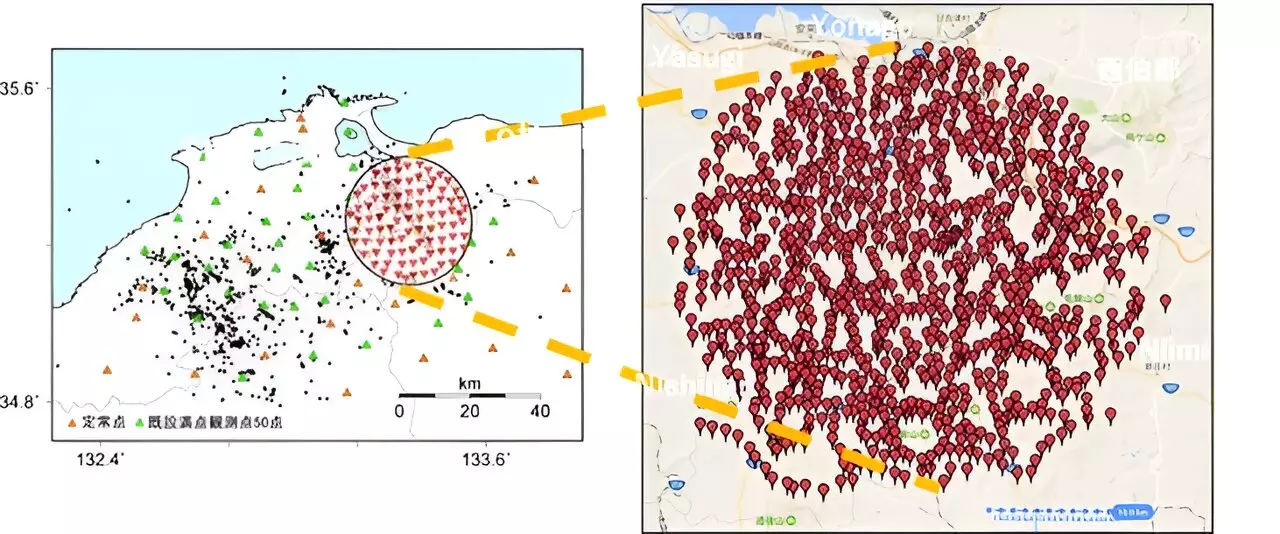Japan, a nation marked by its breathtaking landscapes and vibrant culture, simultaneously wrestles with the relentless threat of seismic activity. Situated along the Pacific Ring of Fire, it experiences an astonishing number of earthquakes each year, ranging from minor tremors to the more alarming possibility of catastrophic events. Although seismologists have made considerable strides in earthquake research, accurately predicting when a major quake will occur remains an elusive challenge. Recently, innovative studies have surfaced aiming to decode the intricate relationship between fault strength and earthquake magnitude.
Among the concepts that have gained attention in the realm of seismology is the b-value, a crucial parameter that helps researchers characterize the distribution of earthquake sizes relative to their frequencies. Led by eminent scientists from Kyushu University and the University of Tokyo, recent research published in *Nature Communications* delves deeper into how the strength of geological faults influences the b-value, thus shedding light on the probability of significant earthquakes.
In the context of seismology, a low b-value suggests that larger earthquakes occur more frequently, while a high b-value indicates a predominance of smaller tremors. This intricate balance can vary widely across different geographical areas and can even change over time. Historically, studies have linked a falling b-value to increasing stress on faults as they near their breaking points. However, the noteworthy findings from this recent investigation introduce fault strength into the discussion as a pivotal element affecting b-values.
The research team’s empirical focus centered around the Western Tottori Earthquake, a significant event that registered a magnitude of 7.3 in 2000. Employing cutting-edge technology, the researchers installed a network of over 1,000 seismic sensors in the vicinity of the quake’s epicenter. This extensive monitoring system enabled an unparalleled level of seismic observation. According to Professor Satoshi Matsumoto, the study’s lead investigator, insights gained from the continuous aftershocks—a phenomenon that persists even two decades later—illustrate that minute shifts within Earth’s crust continue to occur, most of which are undetectable to the human senses.
Through this robust data collection, the research team could ascertain not only minute fault movements but also the predominant orientations of faults in the crust. Such breakthroughs allowed them to delineate a stress field, illustrating the different stress directions acting on each fault during its failure, and categorizing these faults as either strong or weak.
The revelations from this research elucidate a fundamental distinction between fault types. Strong faults, characterized by their resilience, necessitate a higher accumulation of stress before they yield. Conversely, weak faults are predisposed to slipping more readily under lesser stress conditions. This understanding points to a critical implication for earthquake preparedness and risk assessment; the likelihood of a large earthquake may correlate with the presence of strong faults sustaining lower b-values, indicative of a higher risk.
Professor Matsumoto emphasizes a straightforward yet profound takeaway: weak faults, while more prone to releasing stress before accumulating dangerous levels, do not have the capacity to unleash cataclysmic forces. This insight reframes how scientists interpret seismic data and underscore the complexities involved in understanding fault activity.
As this research moves forward, the implications for earthquake prediction potentially veer towards a more accurate model. While the notion of predicting earthquakes with precision remains a distant goal, insights into fault direction, strength, and b-values may gradually allow for estimations regarding when a fault is approaching a critical threshold. This critical threshold represents a point at which only minimal external force could precipitate a quake.
While the ambition of predicting earthquakes is often dubbed the “holy grail” of seismology, it’s the relentless exploration of variables like fault dynamics that brings researchers closer to understanding and mitigating the seismic risks posed to communities. Japan, a land marked by resilience in the face of natural calamities, continues to foster a spirit of inquiry and innovation, contributing not just to its own safety, but to global advancements in earthquake science.


Leave a Reply